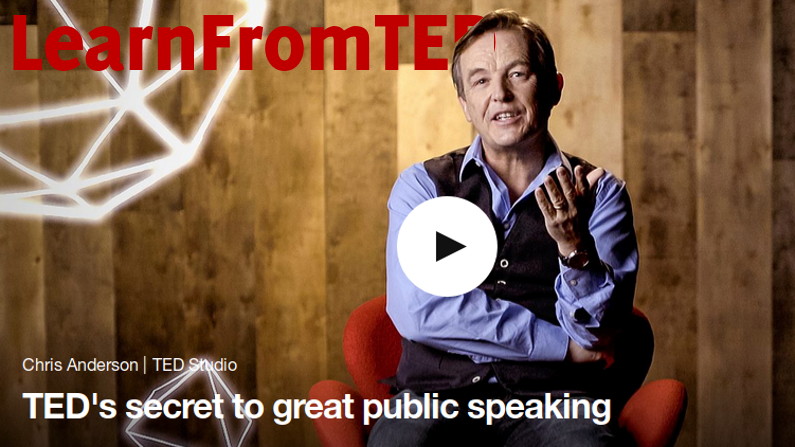A new series on how to improve public speaking by watching TED presentations (#LearnFromTED), and how could I dedicate the opening to anything but Chris Anderson’s video?
Before going straight to it I want to start by saying two important things. If you don’t know what TED, it is a conference born initially around three main themes: Technology, Entertainment and Design (hence the acronym), Today it spans across almost everythinh and if you like to know more you can read the our organization page on TED.
Presentation are recorded and available on their website. On top of being interesting for the ideas they convey, they are often great public speaking examples. Thus the idea of this series where each time we’ll learn something for a specific video.
As I said in the foreword I decided to begin with Chris for two very good reasons: he is TED’s curator, the topic of this talk is exactly the secret to deliver a great TED speech!
What can we take home from this video?
To begin with the three points Chris underlines:
- Only one main idea
- Give the audience a reason to care
- Build your message on what the audience already knows.
The first one is pretty self explanatory.
The second one is also clear, just remember to avoid the common trap of speaking about something because you care about it without involving your audience from the beginning. Tell them why they should care too.
The last point requires a little bit more information, since it may not be immediate to every one. A good example is how we typically learn how is an atom. The most common description (albeit scientifically imprecise) is the one of a planet with satellites spinning around. Now even this may sound abstract (or at least not something of first hand experience), but it works since we assimilate the idea before and we may have seen a visual representation in a planetarium.
In the following instalments the tips for our presentations are not going to be explicit since they will be more in the delivery than in the content itself, like in Chris talk. Even here we can extrapolate a couple of tips from the way is presented.
First of all the delivery is relaxed and linear so that we can focus on the content of the talk, this is good as the purpose of the speech is to inform us.
Also whenever is possible every concept is supported by real examples, those are almost always better than thousands words of theory.
Two tips we can make our own any time it may be needed!


Recent Comments